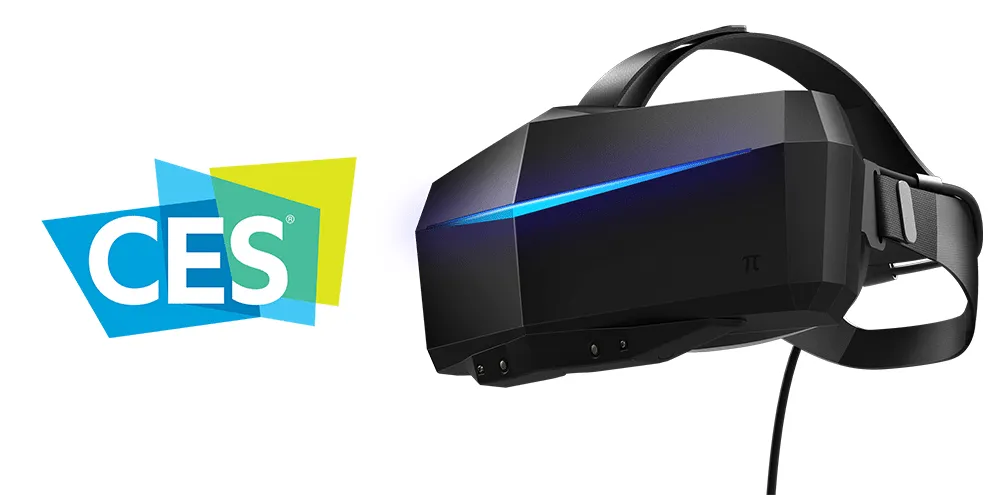At CES 2019 last week we had the chance to interview Pimax Head of US Operations Kevin Henderson. We asked him about a range of topics from their headset, controllers, shipping issues, and future plans.
Here’s what Kevin told us:
What have you learned from the development process?
There’s always ups and downs in production, especially when it’s a new & unique product. The Pimax is a new & unique product in a lot of ways.
We’ve had all sorts of firmware and software revisions to get it fully compatible with the existing literally thousands of applications out there.
You’re expecting to be able to fulfill Kickstarter orders within the next few months, is that right?
We’re running way ahead of that. We’ve been setting records almost every day on production. We actually have some days where we break 200 units in a day.
So we’re talking having all of the units shipped by mid next month for everyone.
How quickly can I get a Pimax? Today if I haven’t ordered one, what’s the soonest you think it could arrive?
If you ordered one today, you’d probably expect to get it in late February or early March.
In April and moving forwards you’re going to see where we have fast shipments where you order it and then you get it, and you don’t have to wait.
When can consumers get the Pimax controllers in their hands?
The first 100 are going out at the end of April. What we’ve done is we’ve scheduled a lull after those first 100 go out, and if we get the green light at that time we’ll ramp up production. If there are changes that need to be made, we’ll make the changes.
But if someone was banking on wide production release, this summer would be a good bet.
If someone has a HTC Vive could they just buy the controllers and have it work with their headset?
We’re talking about that. Having full driver support is a HTC and Valve thing. But that said, Valve is helping us and they are supporting us. We’ll have to what level of support they implement- I don’t know. But we’re hoping we can get 100% feature level support.
Of course if they don’t, we will implement that ourself if we can.
Do these controllers use SteamVR tracking, and are they compatible with SteamVR?
They do. And I will say our prototypes do work with most games right now. When we’re doing our various testing they do show compatibility with most things. Getting that to be a very wide variety is key, and we don’t want to release anything where people wonder why it doesn’t work with popular titles.
We’ve got literally thousands of titles to go through to make sure we have good support, and that’s one of the things we’re doing.
What is the cause of the lens peripheral distortion issue and how are you trying to solve it?
There are issues inherent to angled displays. It’s a very difficult problem to totally overcome. The reason is that eye geometry for different people is different, so different people are going to perceive differently. But that said, we have been improving our algorithms [to incorporate] when you set your IPD [so] it’s also adjusting our algorithms for distortion correction. And that’s one way we’re able to combat that, and that’s why when you see it today it is a lot better than it was a month or two ago.
And you’ll notice that the contrast and colors are better than they were then too. We also have a brightness setting that’s part of our configuration tool just released which lets you get much darker blacks than was possible before. And we’re introducing additional tools. Today we introduced our beta of our BrainWarp tool which is a bit like ASW.
So what we’re trying to do is put out a really nice package that addresses all of the various issues that you could potentially have, including things with the edges. Can we totally get rid of it at any point? Probably not. Eye tracking is a very good solution for that kind of thing, and since all the backers are going to get eye tracking for free, I think many of them will see some very nice benefits from that.
Closing Remarks
I’m a big fan of your publication- I read it all the time. Keep up the good work.
I’m a fan of VR- I just want to see VR do well. That means Oculus, that means HTC, that means Pimax. We need to all work together. This is an industry that’s growing. A lot of people don’t necessarily agree with that but I can tell you the level of interest we have had is over the top. I’m very excited.
Some questions & answers have been paraphrased for better readability. Please see the full video interview above for original wording.


























